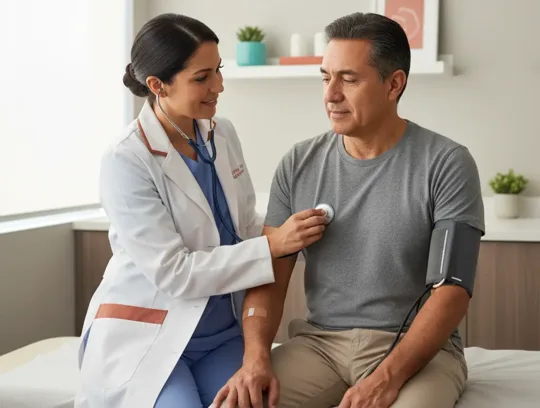Mental disorders produce a significant impact on a person’s physical health, often leading to chronic diseases and other conditions. According to the World Health Organization (WHO), mental disorders are the leading cause of disability worldwide. Additionally, the link between mental and physical health has become increasingly apparent in recent years.
Firstly, mental disorders such as depression and anxiety can lead to chronic illnesses as heart disease, diabetes, cancer, and stroke. Depression, for example, can cause changes in the body’s inflammatory and immune responses, leading to an increased risk of chronic diseases.
Additionally, lifestyle changes associated with mental health conditions, such as poor diet, lack of exercise, and/or substance abuse, can contribute to chronic illnesses. Therefore, it is essential to manage mental health conditions to prevent or manage chronic diseases.
Outpatient care for mental health
Outpatient care can be effective to provide ongoing support and treatment to patients with chronic diseases caused by mental disorders.
This type of care allows patients to:
- Receive treatment and monitoring on an ongoing basis without requiring hospitalization.
- Being included in individual and group therapy.
- Medication management.
- Case management services.
- A comprehensive and holistic approach to care by addressing both mental and physical health needs.

How can telehealth and RPM (remote patient monitoring) help patients with mental disorders?
Telehealth and RPM (remote patient monitoring) can provide an effective solution to this issue. With the advancements in technology, telehealth has become a popular and effective way to provide mental health treatment to patients with mental disorders.
Telehealth offers several advantages over traditional in-person care, especially for patients with mental health conditions. It provides access to care in remote areas while helping overcome the stigma associated with mental health treatment. It also reduces the cost and time associated with travel to and from appointments.
Remote monitoring of patients is another essential aspect of telehealth. It allows healthcare providers to monitor patients’ physical health and provide timely interventions. Remote monitoring involves wearable devices, sensors, and mobile apps to collect and transmit patient data to healthcare providers.
Remote monitoring is particularly useful for patients with chronic diseases caused by mental disorders. For example, patients with depression and heart disease can benefit from remote monitoring of their blood pressure, heart rate, weight, and other vital signs. This allows healthcare providers to detect changes in the patient’s health and provide timely interventions.
Moreover, remote monitoring can help patients manage their mental health conditions better. Patients can use mobile apps to track their mood, medication adherence, and symptoms. This help patients become more engaged in their care and provide healthcare providers with valuable data to monitor their progress.
In conclusion, mental disorders have an impact on a person’s physical health, leading to chronic diseases. Telehealth and remote monitoring of patients provide an effective and user-friendly solution to managing chronic illnesses caused by mental health conditions. These technologies offer several advantages, including increased access to care, reduced cost and time associated with travel, and better patient engagement.



